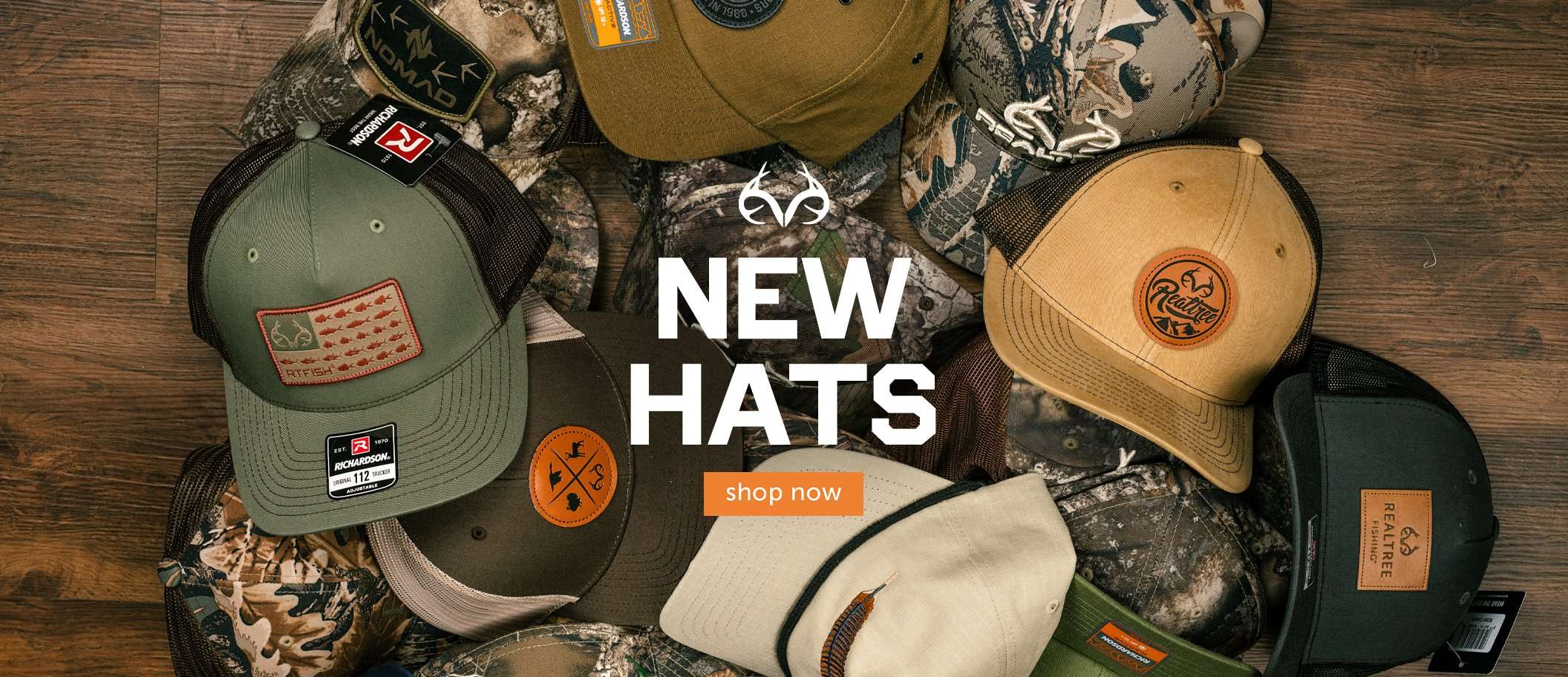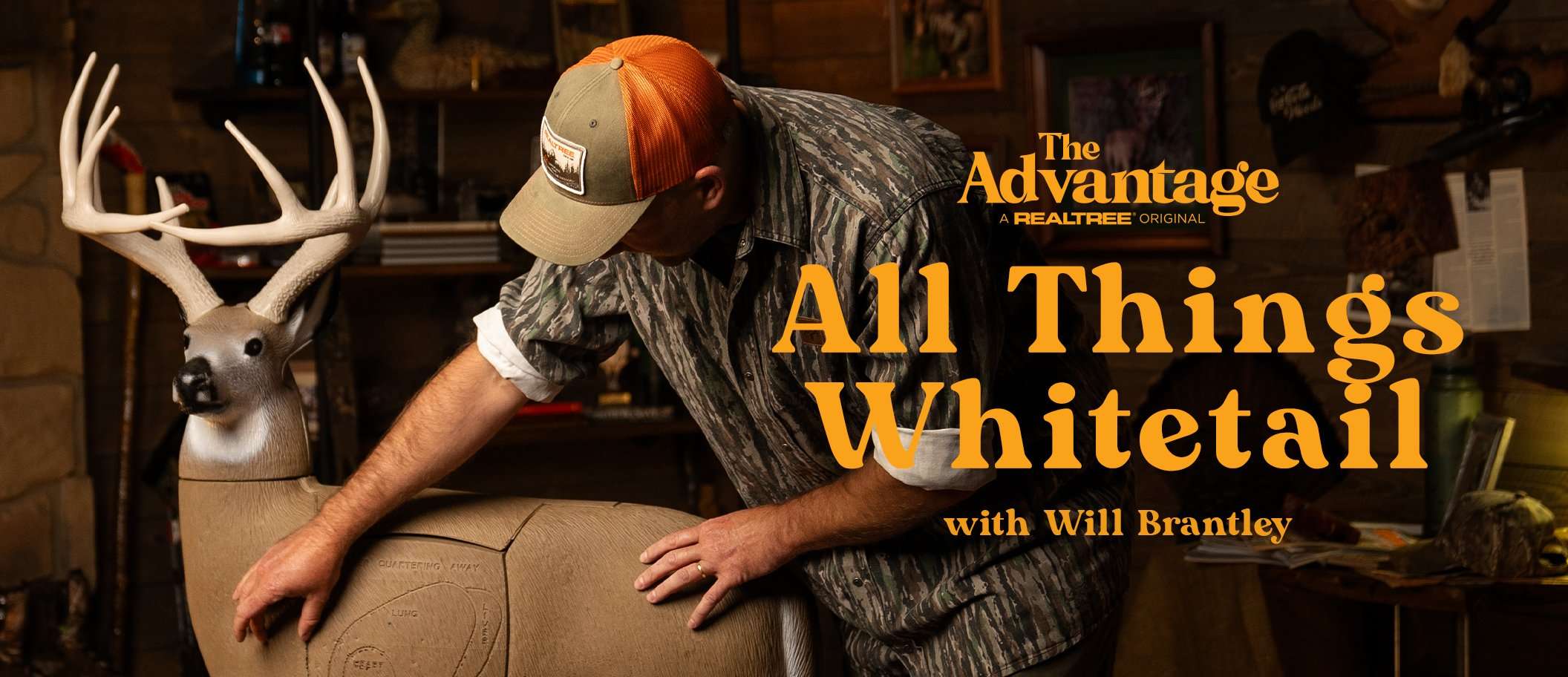Hunting with a rimfire rifle is more popular than ever, and shooters have a plethora of great calibers and loads to choose from. Here are some favorites choices of the rimfire pros
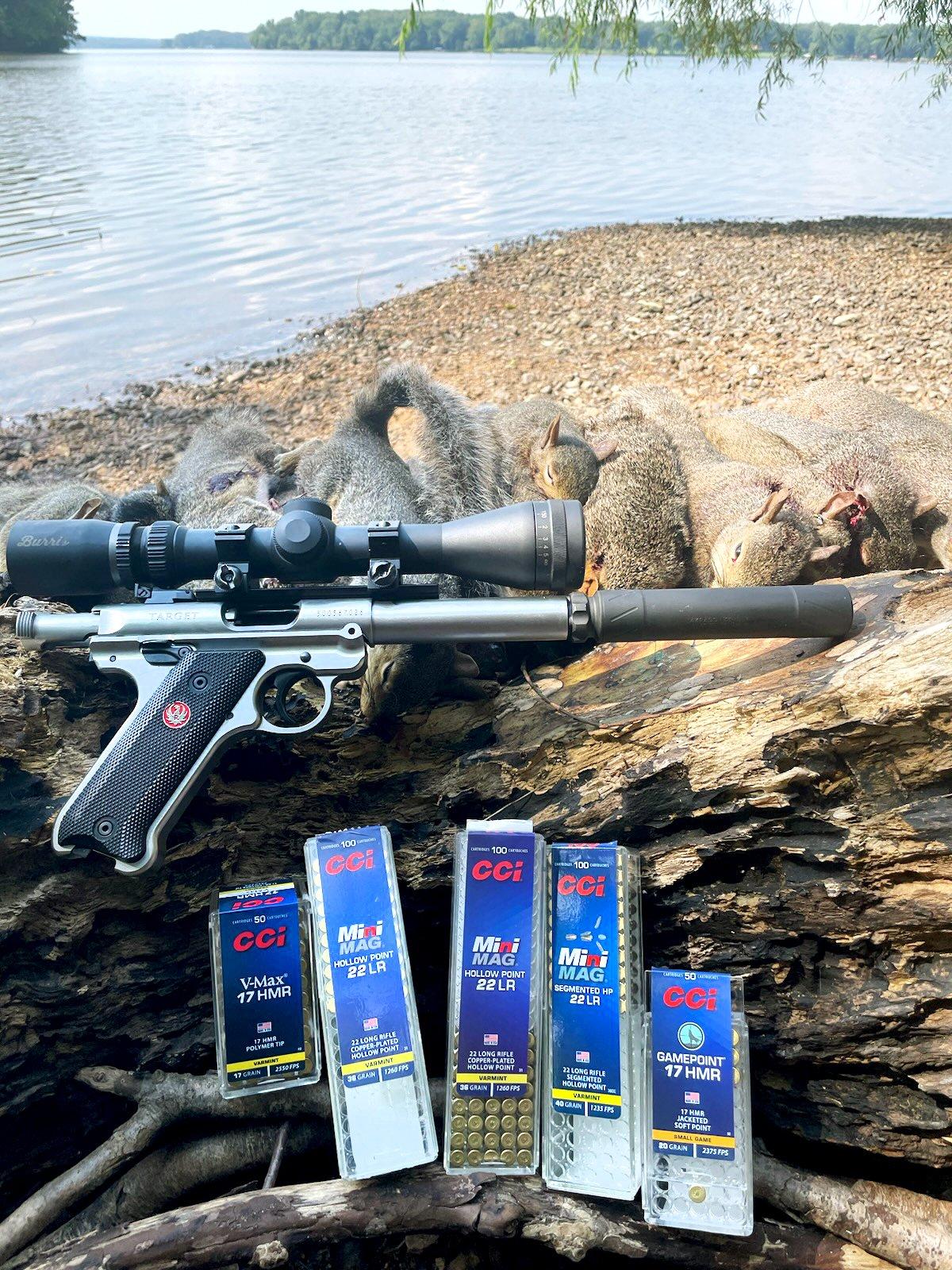
Seasoned small-game hunters have distinct preferences about which rimfire calibers and cartridges perform the best in the field. Photo by Will Brantley.
Small-game hunters love rimfire rounds, and for good reason. They’re fun, easy to shoot — and deadly. But the popularity of rimfire shooting and hunting can create some head-scratching dilemmas, as many hunters wonder which calibers and cartridges will perform best in the field. And the choices seem endless.
No worries. Pros who have fired hundreds of thousands of rounds through the years have identified some distinct preferences for various types of hunting, and their advice can help you.
Getting Started
Before listing specific calibers and cartridges, let’s look at the basics of small-game hunting with rimfire rounds. Many of the principles remain consistent from rimfire to centerfire shooting, but some differ. And ammo ranks as one of the top concerns.
“.22 ammo can vary from gun to gun,” said CCI ambassador Todd Jarrett, winner of several world Steel Challenge aggregate championships, who estimates that he’s shot about a million .22 rounds in his life. “When I go out and purchase some type of ammo for a gun and I don’t know what type it likes, I’ll get some 32-, 36-, and 40-grain bullets, some jacketed, some lead and some hollow-point. Every gun has its own little way of understanding how to shoot one of those projectiles the best for accuracy out to 40 yards. It’s your job to understand what projectile or weight your gun may or may not like in a hunting scenario.”
YouTube personality and CCI ambassador 22plinkster agreed, noting that rimfire rounds are inherently easier to test and fine-tune through high-volume shooting. “At the end of the day, since rimfire is relatively inexpensive to buy, know your gun, know your scope if you’re using one, and practice, practice, practice,” he said. “You will put a lot more squirrels and other small game in the freezer if you do.”
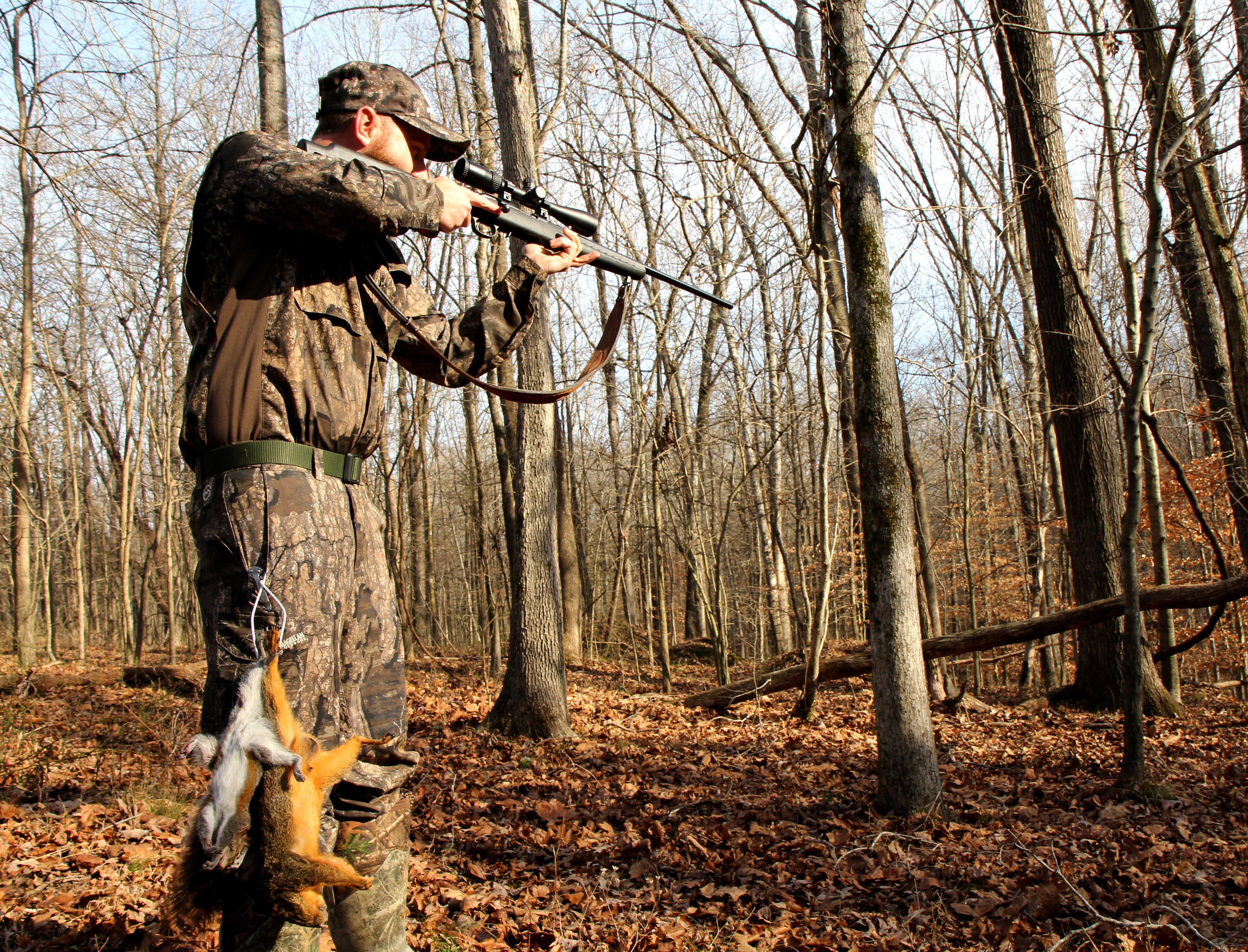
Practicing with a variety of rimfire rounds to determine which shoots best from your gun is the key to putting more squirrels in the freezer. Photo by Will Brantley.
Jarrett said the most important aspect of range time is understanding where a specific bullet will hit at various distances when fired from your hunting gun. “I want to know where my gun is going to impact at every distance starting at the 10-yard line out to 40 yards, which is about the longest shot I’d take at small game,” he said. “My normal zero is at 25 yards away. At that distance, we know that Eastern gray squirrels have a head the size of a golf ball, so if you’re not capable of hitting a golf-ball-sized target at those distances, that’s where your practice would come into play. I’m trying to zero in on a 1-inch square or 1-inch circular type of bull’s-eye, and I want to know the impact at 10, 15, 25, 30, 35 and particularly at 40 yards.”
As with any type of precision shooting, optics can play a critical role for dialing in and hunting with rimfire rounds. “Lots of companies make optics with precise 1-minute-dots or fine cross-hairs to make perfect impacts on the target and not cover up so much of the object,” Jarrett said. “I’m a big advocate of a 1-6X scope versus a 3-9X, as you can bring it down to 1 or 2X. 3-9X can be too much in a hunting scenario. Red-dots are fabulous tools, and I highly recommend using a 1- to 2-minute dot whether on a handgun or a rifle so the size of dot is not obscuring the target.”
Of course, your target species and the manner in which you’re trying to shoot it might hold the most weight when choosing a rimfire hunting caliber. That’s why many pros get very specific. Here are some of their top situational choices.
Don’t Miss: 25 Hillbilly Squirrel Hunting Tips
.22LR
This venerable cartridge is the 500-pound gorilla of rimfire. In fact, based on units sold, it’s the most common ammo in the world. The round was introduced in 1887 by J. Stevens Arms and Tool Co. It combined the case of a .22 Long of 1871 and a 40-grain bullet, giving it higher muzzle velocity and better performance than the .22 Extra Long. For a century and a half, the .22LR has been a favorite of plinkers, target shooters, and small-game hunters, as it’s relatively inexpensive, has little recoil and is extremely effective at short ranges. The .22LR functions in a huge variety of rifles and handguns, and an uncountable number of firearms are chambered for the caliber.
.22LR has been offered in many variants and with several bullet styles through the years, and rimfire hunters have many favorites. Jarrett loves CCI Mini-Mag HP 36-grain loads because they perform so well in many types of guns.
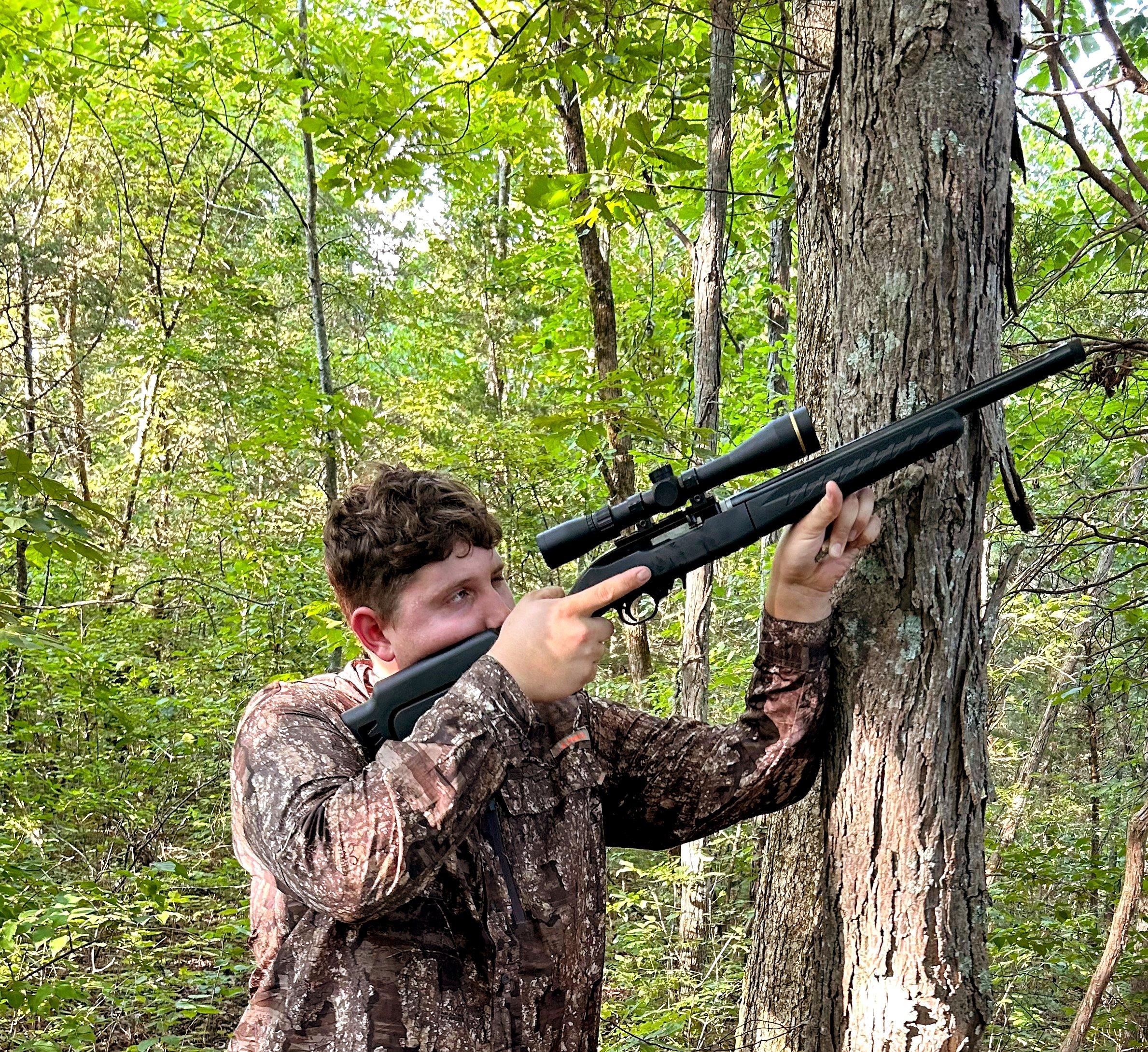
Practice at the range to determine the longest shot you should take at small game in the field. Photo by Michael Pendley.
“It’s my favorite round for my guns,” he said. “I’ve fired hundreds of thousands of rounds competing over the years, and my guns like that round. It was always one of my favorites for hunting over the years, too. If I had to pick one round for my guns, that would be my choice.”
22plinkster goes with the CCI Sub-Sonic HP 40-grain round, which is very quiet but has a bullet that expands well to produce quick kills. “Squirrel season in Tennessee opens in August, and there’s still a lot of foliage on the trees,” he said. “Sometimes, you can get three to four squirrels up in one tree. The benefit of hunting with a suppressor and CCI Sub-Sonic hollow-points is you can get multiple shots without alarming other game in the area. And since your shots are usually less than 60 yards, you can sight in your rifle for 50 yards and pretty much hold on target anywhere from 30 yards out to 60 yards.”
Later during squirrel season, 22plinkster sometimes switches to CCI Mini-Mag 40-grain segmented hollow-points, even though they’re a bit louder than subsonic rounds out of a suppressed rifle. “In fall, winter and late winter, sometimes you might have to take a 100- to 125-yard shot at a squirrel,” he said. “Having that extra velocity will guarantee more hits than trying to figure out your drop on a subsonic bullet. And when shooting a segmenting hollow-point, there’s not too much concern about overpenetrating and hitting something at a faraway distance.”
And as a testament to the .22LR’s versatility, 22plinkster will also use CCI Suppressor .22LR 45-grain loads for a very specialized hunt.
“One of my favorite things to do in summer is to pond hop at night chasing the elusive American bullfrog,” he said. “Most people harvest bullfrogs with frog gigs, but on private property in Tennessee, you are allowed to take bullfrogs with rimfire. It’s some of the most fun you can actually have with a rimfire.”
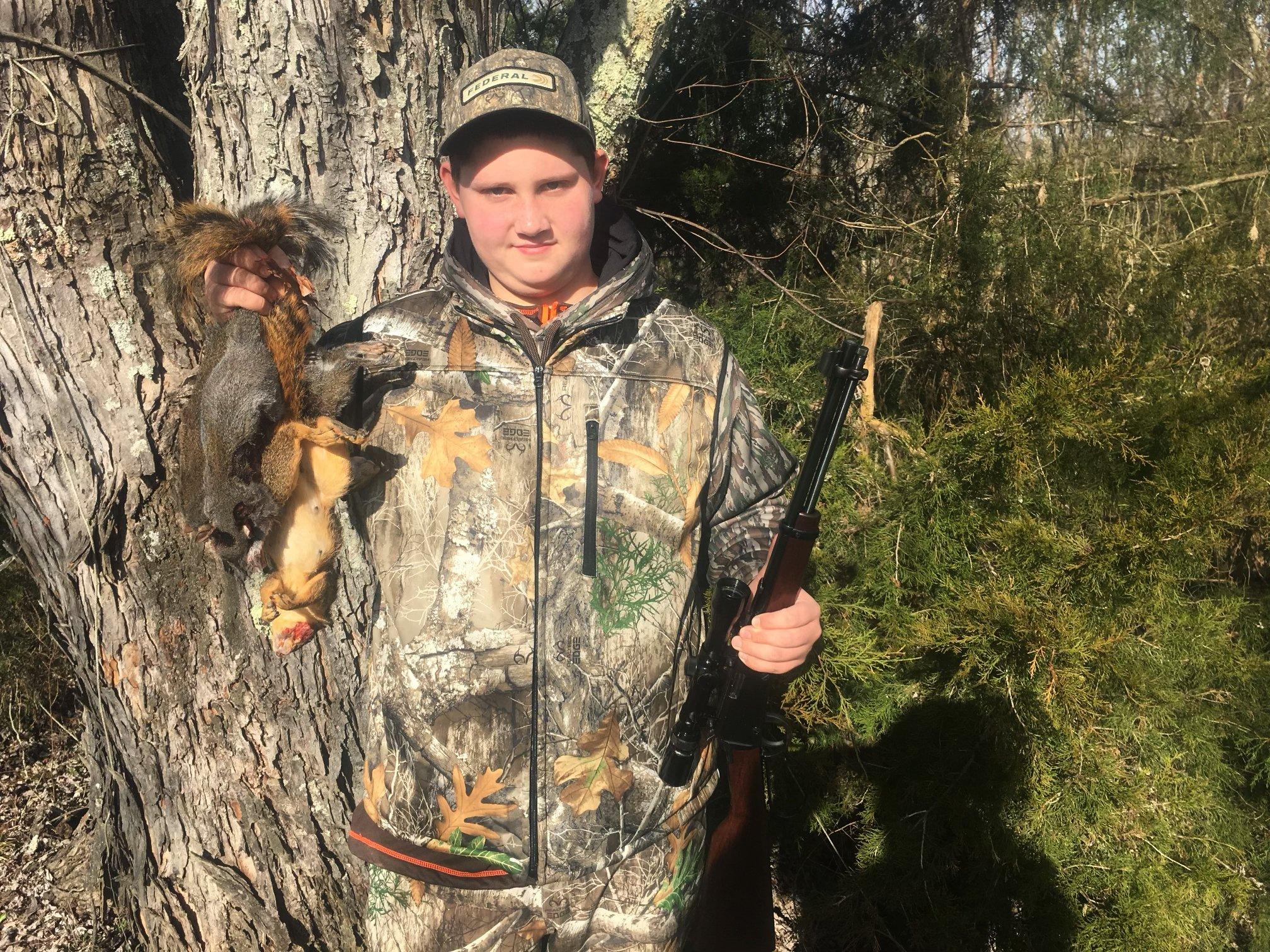
Rimfire rounds are fun, easy to shoot and deadly on small game, such as squirrels. Photo by Michael Pendley.
22plinkster uses the suppressor load because it’s very quiet and provides a lot of terminal energy at close ranges. He shoots them through a suppressed rifle or pistol fitted with a laser sight and sighted in dead-on at 20 feet, using a bright flashlight as an aid.
“Always aim between the eyes,” he said. “If your shot is true, the frog won’t go anywhere. And if you’ve never eaten fresh frog legs, you’re truly missing out on some of the finest wild game meat you can possibly eat. And yes, they really do taste like chicken.”
.17 HMR
The .17 Hornady Magnum Rimfire was developed by Hornady in 2002 by necking down a .22 Winchester Magnum Rimfire case to take a .17-caliber bullet. It’s very similar to rounds developed by wildcatters who created rimfire cartridges with extremely flat trajectories.
Commonly loaded with a 17-grain bullet, the .17 HMR delivers exceptionally fast muzzle velocities — often faster than 2,650 fps. Currently, many manufacturers — including Hornady, CCI, Federal, Winchester, Remington and Browning — offer .17 HMR ammo. Likewise, many gun makers chamber .17 HMR rifles in bolt-action, semi-automatic and lever-action models. Even a few handguns are available.
Devotees love the .17 HMR because it performs well as a dedicated squirrel round or for longer-range varmint control. “It’s a favorite on prairie dogs,” said Jason Slinkard, director of rimfire for Federal, Remington and CCI. “It’s good out to 200 yards, and you get awesome expansion when it hits with the 17-grain bullet. The .17 goes at such a higher velocity, and you get more stabilization with the speed. .22LR is great, but if you’re shooting the high-velocity stuff, it goes into the transonic flight [the speed at which the bullet transitions from supersonic to subsonic speed] inherent with a .22, and it will have some wobble and lose accuracy. The .17 will remain supersonic out to 200 yards.”
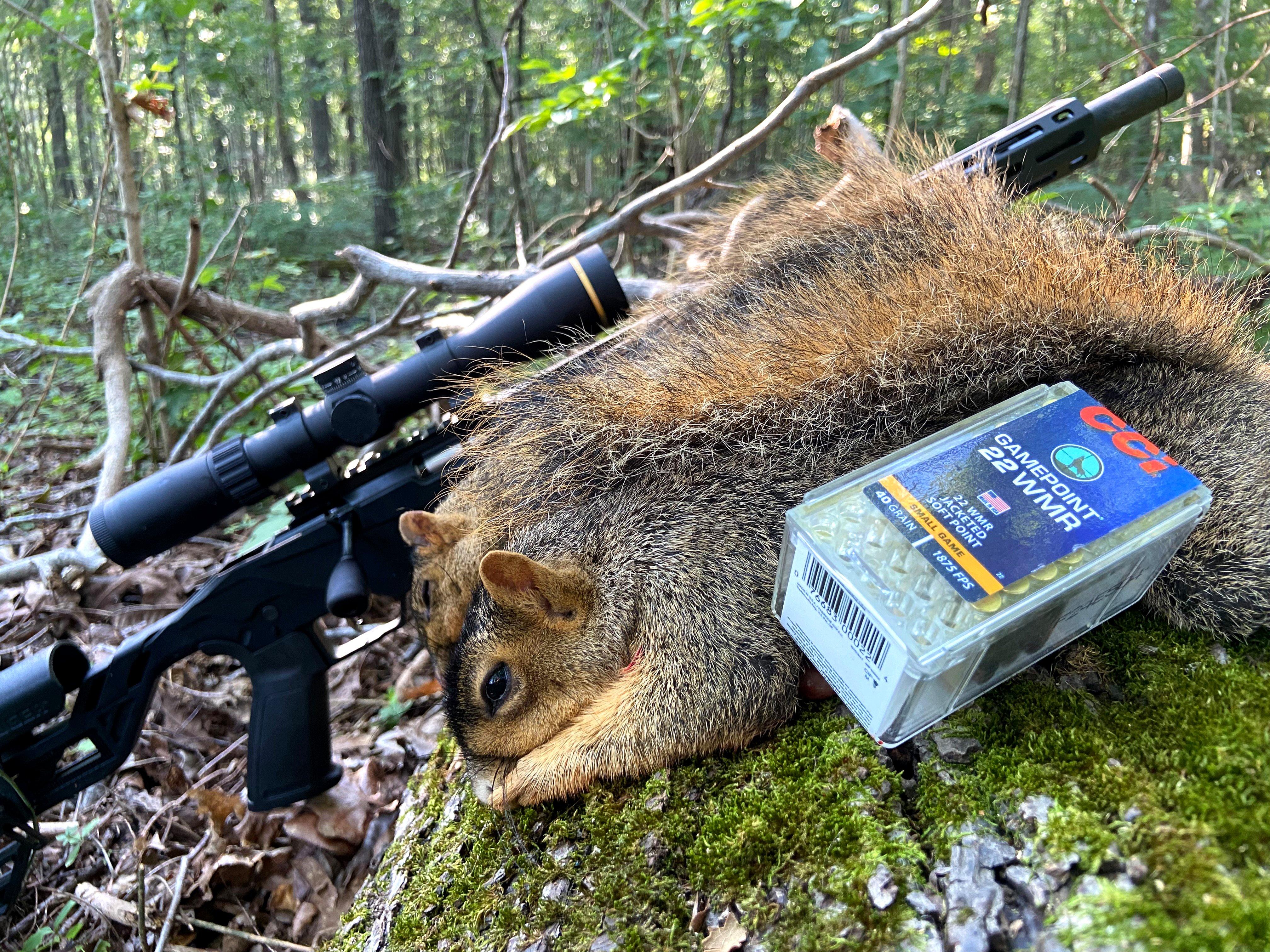
The .22 WMR is a great go-to, all-around rimfire cartridge for varmint shooting and even predator hunting. Photo by Will Brantley.
.22 WMR
The .22 Winchester Magnum Rimfire owns the distinction of being the only successful rimfire cartridge introduced in the 20th century. It was first offered by Winchester in 1959 and soon chambered in many rifles, revolvers and combination guns.
The .22 WMR has a longer, larger-diameter case than the .22LR. It uses more powder and creates higher sustained pressures, producing higher velocities, more energy and flatter trajectories than the .22LR. Initially loaded with a 40-grain bullet, current loadings range from 30 to 50 grains.
Many ammo makers — Hornady, CCI, Federal, Winchester, Fiocchi, Remington and others — offer .22 WMR cartridges. Likewise, innumerable gun manufacturers offer bolt-action, lever-action and semi-auto rifles in .22 WMR, plus pistols and revolvers.
Don’t Miss: What, You Missed a Deer With a Rifle?
“As a dedicated squirrel gun, I prefer the .17 HMR very slightly over the .22 WMR,” said Realtree.com’s Will Brantley, who guides hunters for squirrels in Kentucky. “But for an all-around rimfire rifle that’s great for hunting, varmint shooting, and even predator hunting, the .22 WMR is one of my all-time favorite cartridges. I own a couple of rifles and a revolver chambered as such, and they are go-to tools year-round.”
Brantley said the .17 HMR has more velocity and a flatter trajectory than the .22 WMR, but the latter has a bullet with twice the weight, which equates to better killing power on larger game.
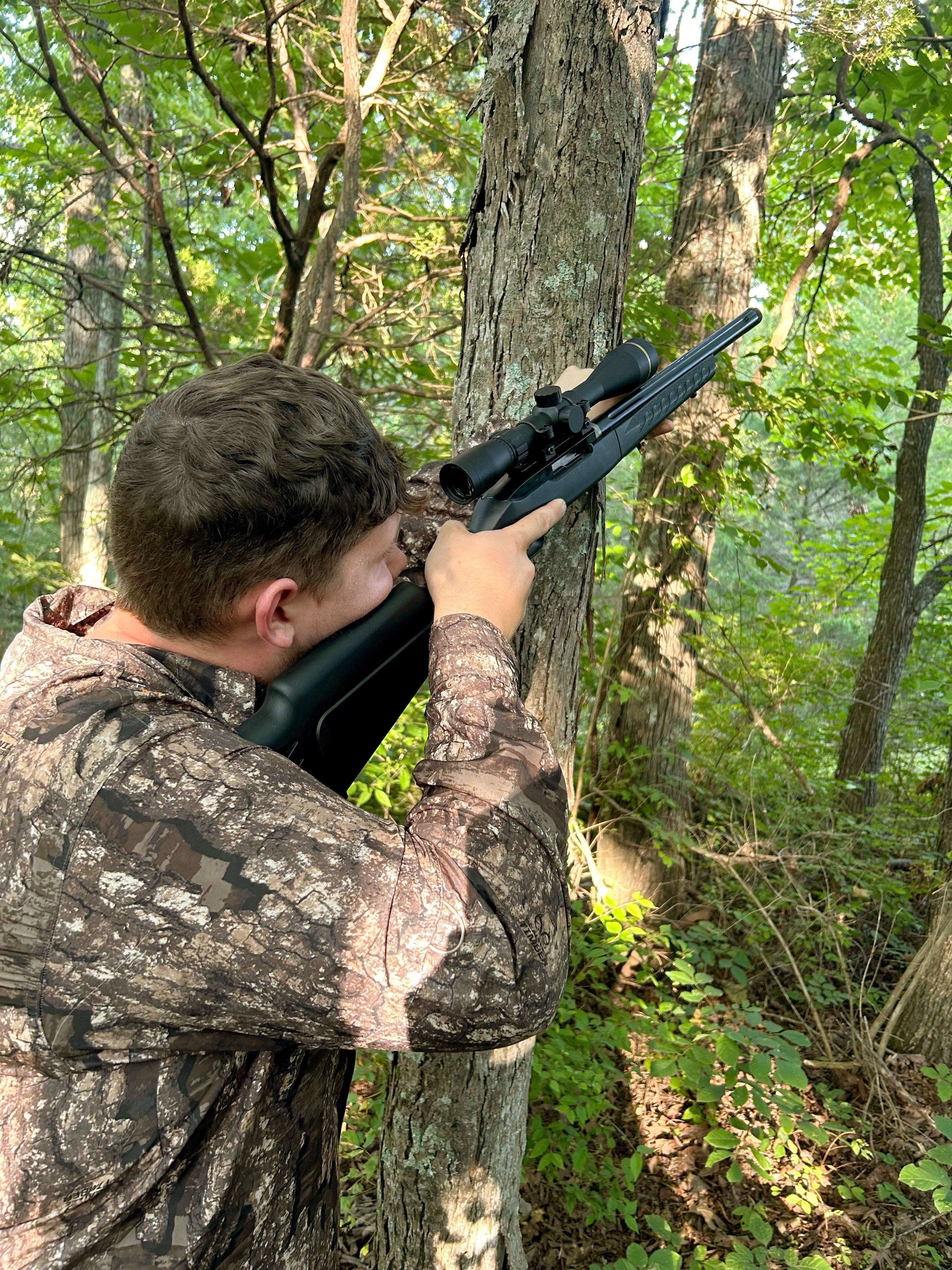
Optics play a very important role for dialing in and hunting with rimfire rounds. Photo by Michael Pendley.
“I’ve seen first-hand that a .22 Mag. will anchor a coyote at 100 yards, but it also works great for head-shooting squirrels at closer ranges, too,” he said. “There’s an old gun-writer myth that the round is inaccurate, but it’s just that: a myth. Most of the new .22 Mag. rifles I’ve shot will group right with a .22LR.”
.17 Mach 2
The .17 Hornady Mach 2 was introduced in 2004 by Hornady, two years after the successful launch of the .17 HMR. The .17 HM2 is based on the .22LR Stinger case necked down to .17 caliber and using a 17-grain bullet — less than half the weight of a typical .22LR bullet.
It produces velocities up to 2,100 fps and retains a flat trajectory to 175 yards.
The Mach 2 hasn’t achieved the popularity of the .17 HMR. However, Hornady, CCI and others offer ammo for the chambering, and Savage, Volquartsen and others produce rifles.
“It’s obviously never achieved the popularity of the other cartridges, but I do know a few serious squirrel hunters who love it,” Brantley said. “It has some of the flat trajectory and accuracy benefits of the .17 HMR, but isn’t as destructive on meat. The tradeoff to that, of course, is reliable killing power. We have guided hunters who carried them, and those guys always held their own when it came to making good head shots. But body shots with it are another story. Round for round, I’ve probably seen more squirrels wounded and lost by the .17 Mach 2 than any of the other cartridges. It’s a specialist round that’s fun to shoot, but doesn’t do a great job at replacing the .22LR or the .17 HMR.”
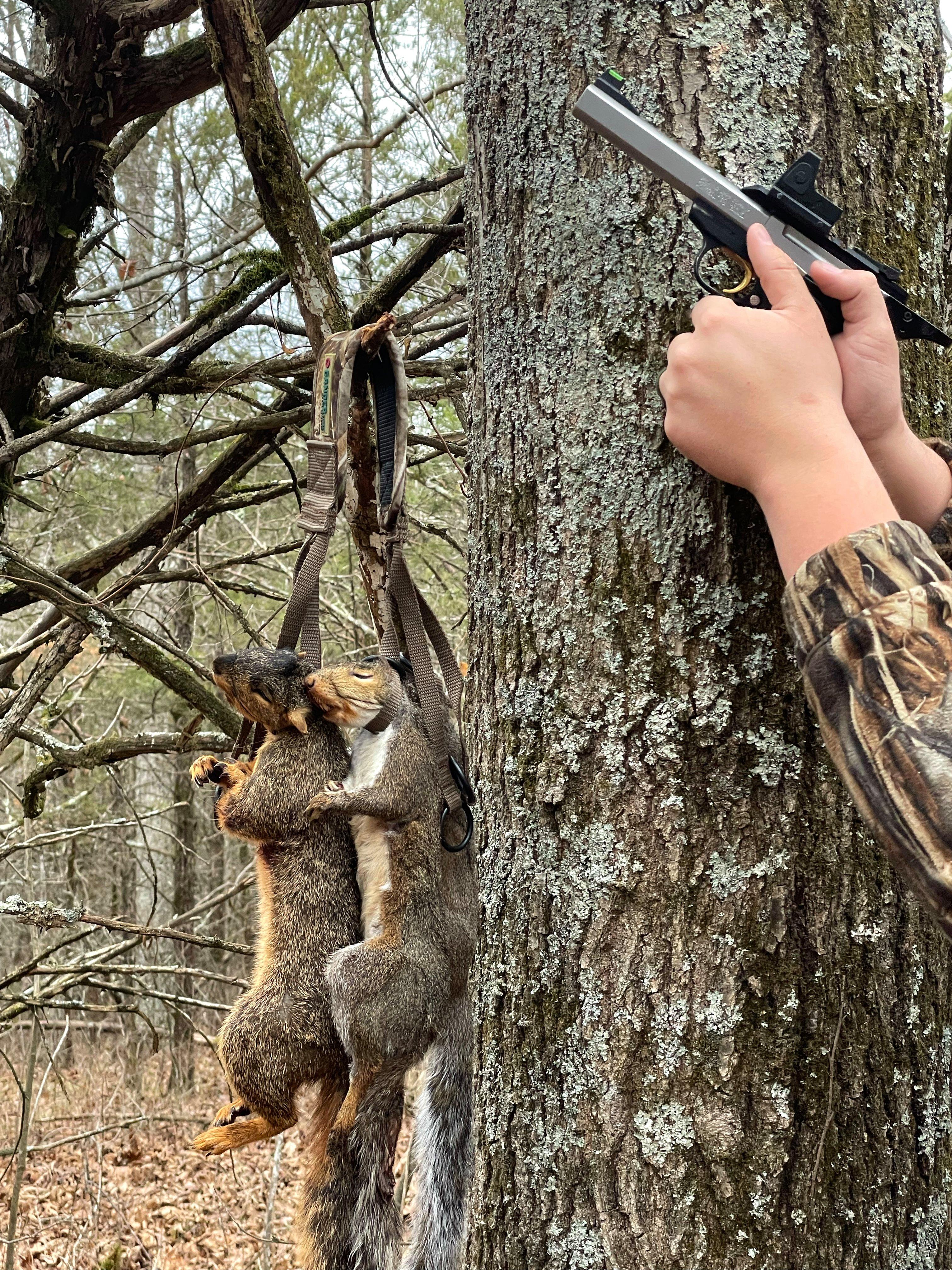
Wondering which caliber and cartridge will perform best in the field? Experiment with various calibers and loads to find out. Photo by Michael Pendley.
.17 WSM
Winchester developed the .17 Winchester Super Magnum in 2012, necking down the case of a .27-caliber nail-gun blank cartridge to take a .17 bullet. The company introduced it in conjunction with Savage at the 2013 Shooting, Hunting and Outdoor Trade Show. The first loadings used a 20-grain bullet and produced muzzle velocities of about 3,000 fps. Winchester, Federal and American Eagle produce factory ammo. Savage, Winchester, Ruger, Franklin Armory and other companies offer .17 WSM rifles.
Ryan McCafferty, a firearms dealer and squirrel hunting guide from Murray, Kentucky, owns two .17 WSM rifles, including a discontinued semi-auto model from Volquartsen. He described the caliber as fast, accurate and flat-shooting, but definitely more of a varmint and predator hunting cartridge than a small game round.
“It’s a whole lot of overkill for squirrels,” he said. “A buddy of mine would say it’s hands-down better than a .22 Mag., but I don’t know about that. I’ve shot a lot of coyotes with the .22 Mag. and several with the .17 WSM. The .17 was very efficient at what it did, but I couldn’t say that it was better, or I’d jump all over making this a dedicated coyote gun.”
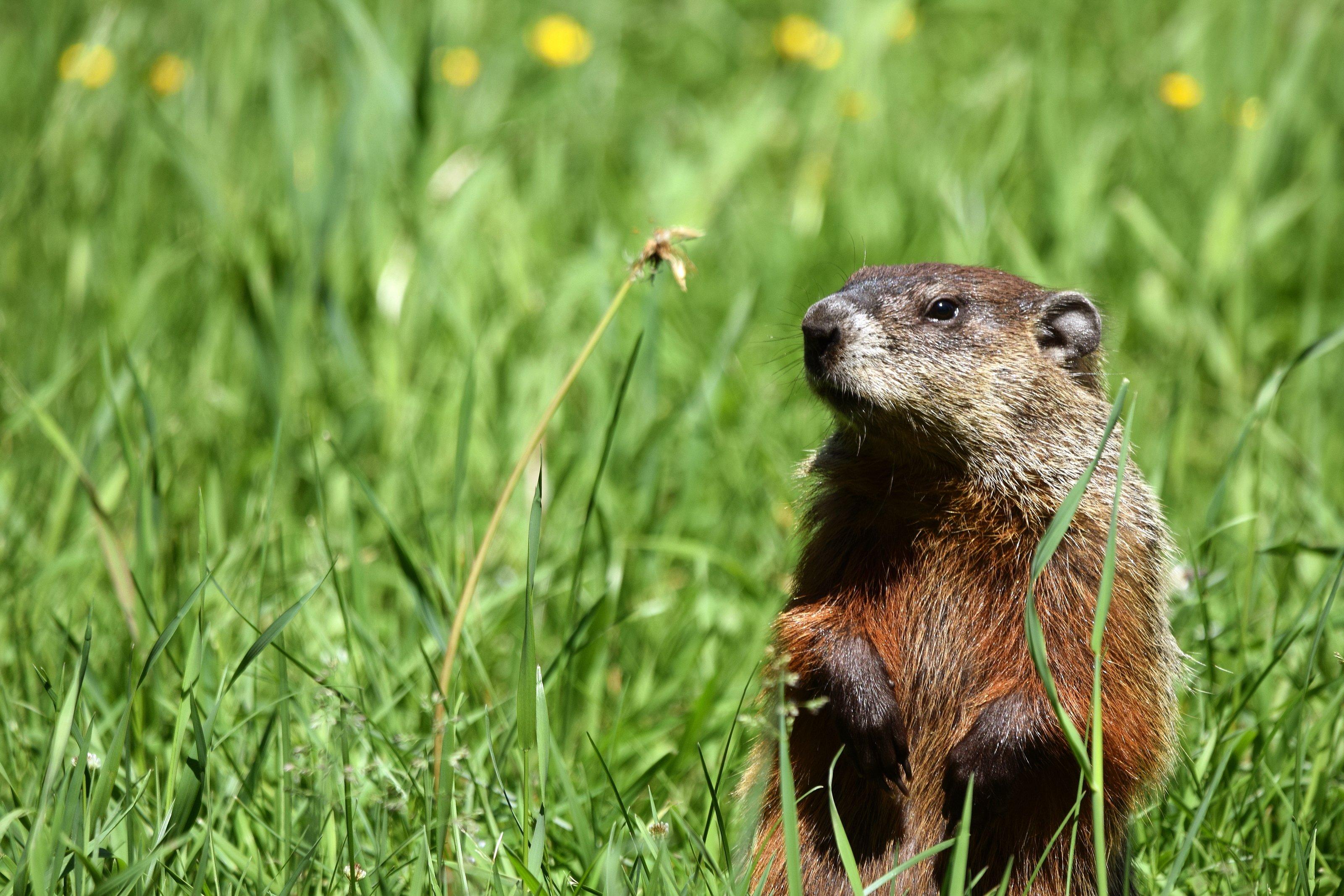
Small-game hunters have a a plethora of great rimfire calibers and loads to choose from. It all comes down to personal preference. Photo by SF.
Get Shooting
These choices can get you started with rimfire small-game hunting. Experiment with various calibers and loads to see which perform best for your needs. Chances are, you’ll need more than one.





